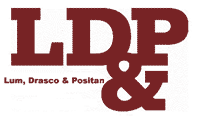Two New Restrictions On Employees Seeking To Compete Against their Former Employer
This article is republished with approval of the New Jersey State Bar Association, and it was first published in the New Jersey Labor and Employment Quarterly, Vol. 25 No. 1 (Fall 2001)
……….For more than 30 years two principles have governed when and how a departing employee can or cannot compete against his or her former employer. First, the employee is barred from utilizing the former employer’s trade secrets disclosed in confidence. Second, an employer may further enforce a non-competition covenant agreed to by an employee that is reasonable in time, scope and area, necessary to protect the employer’s legitimate interest, not unduly burdensome on the employee, and not injurious to the public interest. Two recent decisions, however, should give additional pause to employees considering competing against a former employer: the first appears to create a third type of restriction on “competing” employees, at least in the service industry; the second expands the definition of trade secret in the context of manufacturing.
……….In Lamorte Burns & Co., Inc. v. Walters, Lamorte Burns & Co., Inc. (Lamorte), brought an action against two former employees, Michael Walters and Nancy Nixon, and their newly created competing corporation, The Walters Nixon Group, Inc. (WNG), alleging breach of a restrictive covenant, breach of duty of loyalty, tortuous interference with economic advantage, misappropriation of confidential and proprietary information and unfair competition.
……….The business of Lamorte’s New Jersey office, where Walters and Nixon were employed, was investigating and adjusting two types of marine insurance claims: protection and indemnity (P & I) claims and harbor workers’ compensation claims. In July 1996, 17 months before leaving Lamorte, Walters incorporated WNG. During the next 17 months, while performing their duties on P & I claim files for Lamorte, Walters and Nixon were also compiling a “target solicitation list” from these files, including Lamorte “client names, addresses, phone and fax numbers, file numbers, claim incident dates, claim contact information, and names of the injured persons”, that was stored on Walters’ home computer. In October 1997, Walters and Nixon signed a three-year lease for office space and purchased office equipment, leased computers, and obtained telephone and fax lines for the new office.
……….On December 20, 1997, a Saturday, Walters and Nixon removed their personal belongings and faxed resignation letters to the private office of Lamorte’s president. With these resignations, Lamorte no longer had a P & I claims adjuster in its Clark office.
……….The next day, WNG faxed solicitation letters and file transfer authorization forms to all but one of Lamorte’s 34 P & I clients. In addition to notifying the client that Walters and Nixon had been handling the client’s file, and had resigned to start a new business that was seeking to service the client, the typical letter and form stated as follows:
[The letter] stated “Our fee structure will be less than Lamorte Burns fee structure for 1998.” The client was told that it had absolute discretion in deciding whether to continue with Lamorte or to have its claim files in progress transferred to WNG or to any other firm. …The form included “a list of open files we have been handling for you.” (emphasis added). In addition to the client’s file number, the transfer form included the client’s name, the name of the injured person, and the accident date. The client was instructed simply to mark an “X” next to each listed file that it wished to have transferred from Lamorte to WNG
……….All 33 P & I clients who received these letters and forms requested that their active claim files be transferred to WNG.
……….The trial court granted summary judgment on liability in favor Lamorte on all of its claims, and then, after a hearing, awarded it $232,684 in compensatory damages and $62,816.23 in punitive damages. The court explained its findings:
If you examine the solicitation, you will see that they didn’t just ask generally for a customer’s business. They asked for the work that was specifically behind handled by the plaintiff, and on a case-by-case basis specifically mentioning the name of the claimant … . Effectively, what they said to the customer that they were soliciting is, look, we’re dealing with the following cases right now for Lamorte, and we want them … This was information [defendants] would not have generally known but for their employment with plaintiff. They wouldn’t have known the specific file, the accident date… . And there isn’t any dispute that information came from the plaintiff
……….While affirming the liability judgment concerning the covenant claim, the Appellate Division reversed the grant of judgment concerning the tort claims, finding “disputed facts concerning the confidential and proprietary nature of the information defendants had taken from plaintiff, as well as issues concerning whether defendants’ conduct was acceptable competitive behavior or malicious and in violation of the “rules of the game’ of the parties’ business.” The court’s ruling “was founded on defendants’ assertions that they were never told that the information was confidential and proprietary, and that although the information was not generally available, it could have been obtained simply by sending out letters of solicitation to all of Lamorte’s clients asking permission to have all files transferred, not just those files defendants were working on.”
……….The Supreme Court reversed the Appellate Division decision concerning the tort claims, and reinstated the trial court’s decision concerning these claims. The Court’s decision was premised upon its finding that the information utilized by Walters and Nixon to compete against Lamorte, even if not a trade secret, was Lamorte’s confidential information that could not be utilized by its employees, with or without the existence of a restrictive covenant.
……….The Court first opined that confidential information “need not rise to the level of a trade secret to be protected” in the absence of a restrictive covenant. In making this finding, the Court followed the reasoning of the oft-cited Law Division decision in Platinum Management, Inc. v. Dahms. Platinum Management, which involved a non-competition covenant, held that a customer list may be protected if it goes “beyond mere names, but also include[s] buying habits, mark-up structure, merchandising plans, projections, and product strategies.” This is true even when the identities of the customers are “listed in readily obtainable trade directories”, since “the fact that they were the plaintiff’s customers [is] not.”
……….According to the Court, the essential inquiry as to when a non-trade secret may nevertheless be protectable at common law concerns “the relationship of the parties at the time of disclosure and the intended use of the information.” Thus, the Court adopted the reasoning that information could be confidential not only based upon the nature of the information itself (the traditional trade secret analysis), but also as a byproduct of the special agency relationship between the employer and employee. The Court cited favorably Restatement (Second) on Agency, § 395 (1958), which provides that “unless otherwise agreed, an agent is subject to a duty to the principal not to use or to communicate information confidentially given him by the principal or acquired by him during the course of or on account of his agency or in violation of his duties as agent, in competition with or to the injury of the principal.”
……….The Court thus concluded that “[t]he specific information provided to defendants by their employer, in the course of employment, and for the sole purpose of servicing plaintiff’s customers, is legally protectable as confidential and proprietary information”, aside from whether or not it qualifies as a trade secret, because defendants “would not have been aware of that information but for their employment.” The Court held that Walters and Nixon, by virtue of having utilized this information to compete against Lamorte, violated their duties of loyalty to Lamorte, even though they did not actually solicit Lamorte’s clients while employed by Lamorte. The Court further held that this same conduct constituted causes of action for tortuous interference with economic advantage, misappropriation of confidential and proprietary information and unfair competition.
……….In so holding, the Supreme Court in Lamorte Burns adopts and extends the rule of Platinum Management, reasoning that specific customer information not rising to the level of a trade secret provided by an employer to an employee for the purpose of furthering the employer’s business may be protectable even in the absence of a restrictive covenant. Thus, while still free to provide services to customers cultivated prior to becoming employed with his or her present company, an employee not restricted by a covenant who possesses specific information about his former employer’s customers and marketing must now proceed more carefully to the extent he or she seeks to leave employment and start or join a competing business.
……….In Rycoline Products, Inc. v. Walsh, the Appellate Division addressed an apparent issue of first impression: Is a company that reverse engineers a competitor’s product entitled to have the fruit of its efforts protected? The plaintiff, Rycoline Products, Inc., a manufacturer of chemical products in the printing industry, had employed three persons (two salespersons and a district managers) who left to work for a competitor, C&W Unlimited. While these individuals were still in its employ, Rycoline developed a “fountain solution” labeled ACFS 276. ACFS 276 was the result of an attempt by Rycoline to reverse engineer Anchor MXEH, an unpatented product manufactured by Anchor Lithkemko, a company not a party to this action. Rycoline spent nearly one million dollars in hiring chemists and setting up a laboratory in order to reverse engineer Anchor MXEH. Rycoline alleged that the district manager had access to “a hard copy of the formula for ACFS 276”.
……….Shortly after the district manager began working at C&W, C&W began purchasing chemicals found in ACFS 276, and months later formulated a product that was similar to ACFS 276 in that it “included a three-part buffering system as well as a two-part synthetic gum/natural gum system”. Rycoline filed suit against C&W, the two owners of C&W, and the three individuals who left Rycoline to work for C&W. Rycoline alleged, inter alia, that C&W, the C&W owners and the former district manager had misappropriated Rycoline’s asserted trade secret concerning ACFS 276.
……….The trial court dismissed the misappropriation claim, predicating its ruling upon a finding that “you cannot protect as your trade secret that product which was taken from another manufacturer through re-engineering of his trade secret”. However, the Appellate Division reversed the trial court’s determination that there was no trade secret, and remanded for a jury determination on Rycoline’s claims.
……….The Court first clarified the respective burdens of proof for a tort of misappropriation of a trade secret under New Jersey law. A plaintiff, as aprima facie case, must demonstrate the following six elements:
(1) A trade secret exists; (2) the information comprising the trade secret was communicated in confidence by plaintiff to the employee; (3) the secret information was disclosed by that employee and in breach of that confidence; (4) the secret information was acquired by a competitor with knowledge of the employee’s breach of confidence; (5) the secret information was used by the competitor to the detriment of plaintiff; and (6) the plaintiff took precautions to maintain the secrecy of the trade secret.
……….If the plaintiff can satisfy this burden, then “the burden shifts to defendant to show that it could have arrived at its product by reverse engineering some product in the public domain.” Defendant’s burden, however, is not simply whether it could have simply reverse engineered a product in the public domain, but that the product at issue was “quickly reverse engineer able” The Court further noted that “[t]he more difficult, time consuming and costly it would be to develop the product, the less likely it can be considered to be “reverse engineer able’.”
……….The Court then held that there was no basis in law for a per se rule that the fruit of a competitor’s reverse engineering could never itself become a trade secret entitled to legal protection. Instead, the Court instead adopted the reasoning of the following commentary to the Uniform Trade Secrets Act, which the Court quoted in its decision:
Information is readily ascertainable if it is available in trade journals, reference books, or published materials. Often, the nature of the product lends itself to being readily copied as soon as it is available on the market. On the other hand, if reverse engineering is lengthy and expensive, a person who discovers a trade secret through reverse engineering can have a trade secret in the information obtained from reverse engineering.
……….Having reversed the trial court’s legal ruling that Rycoline could not as a matter of law demonstrate that its reverse engineering of ACFS 276 constituted a trade secret, the Court remanded for a jury determination as to 1) whether the result of Rycoline’s reverse engineering of Anchor MXEH was a trade secret, 2) whether plaintiff could meet the other elements of its prima facie case, and 3) whether the defendant could demonstrate that it could have sufficiently quickly learned the information comprising Rycoline’s trade secret through reverse engineering.
……….The Court made clear that even though the commencement of the reverse engineering process does not implicate a protected trade secret, it is possible that the process may ultimately result in the development of a compilation that is, in fact, a trade secret. The Court held, in effect, that a compilation or formula developed through lawful reverse engineering is entitled to the same protection as any other compilation or formula that may be deemed a trade secret. It did not rule that all successful reverse engineering would yield a trade secret; it ruled that the fact that the trade secret was the result of reverse engineering does not permit the conclusion that it is entitled to less protection that some other type of trade secret.
……….Rycoline Products has made it easier for a party asserting a trade secret to establish its prima facie case by broadening the definition of potential trade secrets to include those resulting from reverse engineering. The critical inquiry may now be whether the defendant can show that the plaintiff should not be able to recover because the defendant could have “quickly” derived through reverse engineering plaintiff’s asserted trade secret. This inquiry may lead to many further questions. Should quickly be defined exclusively as a function of time, and if so, what is quick -two weeks, one month, three months? Or should quickly also be defined in consideration of other factors, such as the amount of resources that would be required for such reverse engineering? Does the standard require a complete reverse engineering, or only a substantial one? Will expert testimony be required to demonstrate that a product is “quickly reverse engineer able”?





